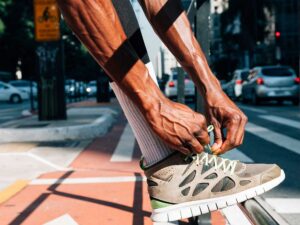Currently Empty: £0.00

Mobility training is often overlooked but is one of the most crucial components of any fitness routine. Whether you’re lifting weights, running, or doing yoga, improving your joint mobility can help you move better, prevent injuries, and perform at your best. But a common question is: Should you do mobility training before or after your workout?
The answer: It depends on your goal. Let’s break it down.
🔹 Mobility Training Before a Workout
Goal: Prepare your body for movement
Doing mobility exercises before your workout acts as a dynamic warm-up. It helps activate muscles, increase joint range of motion, and improve circulation — all of which reduce your risk of injury and improve performance.
Best for:
- Activating tight hips before squats or lunges
- Loosening shoulders before upper body workouts
- Warming up joints before running or HIIT
Examples:
- Leg swings, hip circles
- Arm circles, shoulder rolls
- World’s greatest stretch
- Dynamic lunges with rotation
✅ Why it works:
Prepares your joints and muscles for the specific movements in your workout.
🔹 Mobility Training After a Workout
Goal: Improve long-term flexibility and joint health
Post-workout mobility work is more restorative and corrective. Your muscles are warm, making it a great time to work on increasing range of motion and releasing tight areas.
Best for:
- Improving long-term mobility and flexibility
- Reducing stiffness and aiding recovery
- Working on problem areas (e.g., tight hips, ankles, shoulders)
Examples:
- Deep hip stretches
- Thoracic spine openers
- Pigeon pose, couch stretch
- Foam rolling combined with mobility drills
✅ Why it works:
Your body is warm, which allows deeper stretches and better mobility gains over time.
🟢 Best Practice: Do Both, with a Focus
- Before your workout: Keep mobility dynamic and movement-focused to prepare your body.
- After your workout: Use static and targeted mobility drills to improve range and speed up recovery.
Final Thought
Mobility isn’t just a warm-up add-on — it’s a performance enhancer and injury prevention tool. Incorporating both pre- and post-workout mobility can help you move better, feel better, and train harder — for longer.
So whether it’s hip openers before squats or deep shoulder stretches after a push session, mobility training belongs on both sides of your workout.

